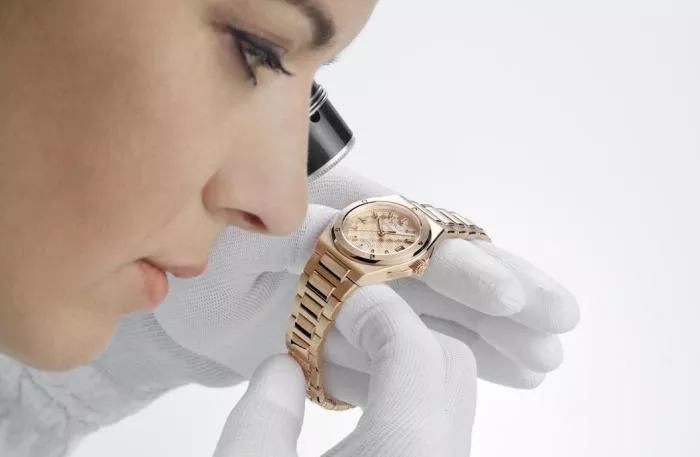Swiss watch exports to the U.S. skyrocketed by 149% year-on-year in April, according to late May data. However, industry analysts attribute the spike to stockpiling rather than surging demand. Brands are preparing for potential tariff changes after the 90-day “reciprocal exemption” period expires, leaving the future of U.S.-Swiss trade policies uncertain.
The global economy continues to navigate unprecedented volatility, with geopolitical tensions and policy shifts reshaping markets. The luxury watch sector, long seen as a barometer of economic sentiment, reflects these broader trends through design choices, material preferences, and strategic pivots.
18K Gold Emerges as the Ultimate Stabilizer
Since 2020, rising gold prices and a flight to stability have fueled demand for 18K gold timepieces. Brands are innovating with proprietary alloys, blending warmth and exclusivity:
- Jaeger-LeCoultre unveiled a Reverso model with a rose gold Milanese mesh strap.
- Rolex introduced its first 18K yellow gold “Settimo” bracelet for the 1908 collection.
- A. Lange & Söhne debuted a limited Odysseus in patented “honey gold,” while Breguet developed a bespoke “Breguet gold” for its 250th anniversary.
“Warm-toned metals resonate in uncertain times,” noted Marc Michel-Amadry, CEO of Girard-Perregaux, during an April interview in Shanghai. “They evoke heritage and permanence.”
Blue Reigns Supreme as the Color of Calm
After years of green’s dominance, blue has reclaimed its position as horology’s anchor hue—extending beyond dials to cases and bracelets:
- Chanel launched a J12 Bleu series for its 25th anniversary, featuring matte ceramic and translucent sapphire tones.
- Audemars Piguet crafted “Night Blue” ceramic models for its Royal Oak line.
- Zenith and Breguet leveraged signature blues for anniversary editions, tying the shade to brand identity.
Psychologists suggest blue’s association with trust and tranquility aligns with current consumer psychology.
Mineral Dials Make a Comeback
Gemstone dials, popular in mid-century designs, are resurging—particularly among jewelry-focused brands:
- Piaget revived its 1960s “21st Century” aesthetic with opal, tiger’s eye, and meteorite dials.
- Chopard curated a “Precious Time” set with malachite, carnelian, and onyx, each stone symbolizing an emotion.
- Even Rolex and H. Moser embraced the trend, with the former releasing a GMT-Master II in iron tiger’s eye.
The Return of Smaller Case Sizes
As dress watches regain popularity, case diameters are shrinking below 40mm:
- A. Lange & Söhne’s 1815 model now measures 34mm, appealing to both classicists and female collectors.
- IWC added a 35mm Ingenieur, while Montblanc reimagined its dive watch at 38mm for urban versatility.
Historically, larger cases thrived during economic booms and tool-watch demand. Today’s shift toward subtlety mirrors a broader preference for understatement.
Navigating Uncertainty with Caution
With Swiss watch exports dipping slightly in 2024 and geopolitical tensions escalating, brands are doubling down on heritage and core strengths. From anniversary tributes to material innovation, the industry’s “back to basics” approach may be the wisest hedge against turbulence.


